Studies Using Simulation to Examine the Behaviour of Sintered Aluminium Preforms during Densification †
Abstract
:1. Introduction
2. FEA Simulations on the Densification Process
3. Discussion
4. Conclusions
Author Contributions
Funding
Institutional Review Board Statement
Informed Consent Statement
Data Availability Statement
Conflicts of Interest
References
- Kuhn, H.A.; Downey, C.L. How flow and fracture affect design of preforms of powder forging. Powder Metallurgy Powder Technol. 1974, 10, 59–66. [Google Scholar]
- Narayanasamy, R.; Ponalagusamy, R. A Mathematical theory of plasticity for compressible powder metallurgy materials—Part II. J. Mater. Process. Technol. 2000, 97, 110–113. [Google Scholar] [CrossRef]
- Park, J.J. Constitutive relations to predict plastic deformations in porous metal during Compaction. Int. J. Mech. Sci. 1995, 37, 709–719. [Google Scholar] [CrossRef]
- Selvakumar, N.; Narayanasamy, R. Phenomenon of strain hardening behaviour of sintered aluminium preforms during cold axial forming. J. Mater. Process. Technol. 2003, 142, 347–354. [Google Scholar] [CrossRef]
- Narayanasamy, R.; Ramesh, T.; Pandey, K.S. Some aspects on work ability of aluminium–iron powder metallurgy composite during cold upsetting. Mater. Sci. Eng. A 2005, 391, 418–426. [Google Scholar] [CrossRef]
- Zhang, X.Q.; Peng, Y.H.; Ruan, X.Y. Simulation and fracture prediction for sintered materials in upsetting by FEM. J. Mater. Process. Technol. 2000, 105, 253–257. [Google Scholar] [CrossRef]
- Huang, C.C.; Cheng, J.H. An investigation into the forming limits of sintered porous materials under different operational conditions. J. Mater. Process. Technol. 2004, 148, 382–393. [Google Scholar] [CrossRef]
- Bharath, K.; Khanra, A.K.; Davidson, M.J. Micro Structural Analysis and Simulation Studies of Semi-Solid Extruded Al–Cu–Mg Powder Metallurgy Alloys. In Advances in Materials and Metallurgy, Proceedings of ICEMMM 2018, Kalavakkam, India, 2018; Springer Nature Pte Ltd.: Singapore, 2019. [Google Scholar] [CrossRef]
- Smith, L. Simulation in Powder Metallurgy. In Proceedings of the Third International Conference and Exhibition on Powder Metallurgy, Sinaia, Romania, 7–9 July 2005. [Google Scholar]
- Zhou, J.; Zhu, C.; Zhang, W.; Ai, W.; Zhang, X.; Liu, K. Experimental and 3D MPFEM simulation study on the green density of Tie6Ale4V powder compact during uniaxial high velocity compaction. J. Alloys Compd. 2020, 817, 153226. [Google Scholar] [CrossRef]
- Chandrasekhar, P.; Singh, S. Investigation of dynamic effects during cold upset-forging of sintered aluminium truncated conical preforms. J. Mater. Process. Technol. 2011, 211, 1285–1295. [Google Scholar] [CrossRef]
- Narayanasamy, R.; Ramesh, T.; Pandey, K.S.; Pandey, S.K. Effect of particle size on new constitutive relationship of aluminium–iron powder metallurgy composite during cold upsetting. Mater. Des. 2008, 29, 1011–1026. [Google Scholar] [CrossRef]
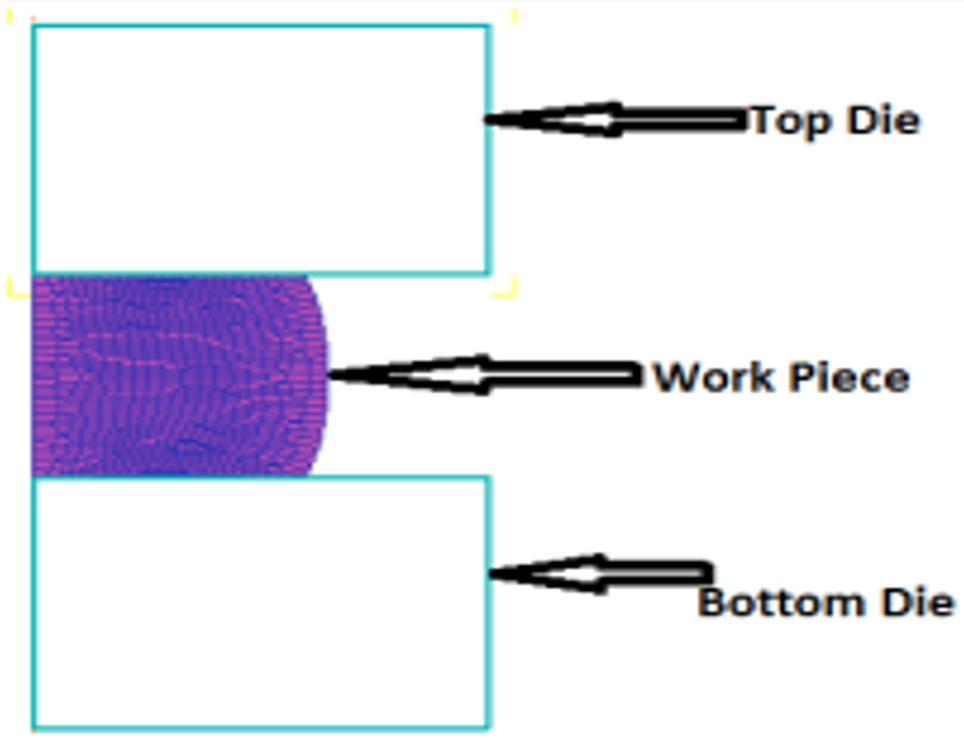
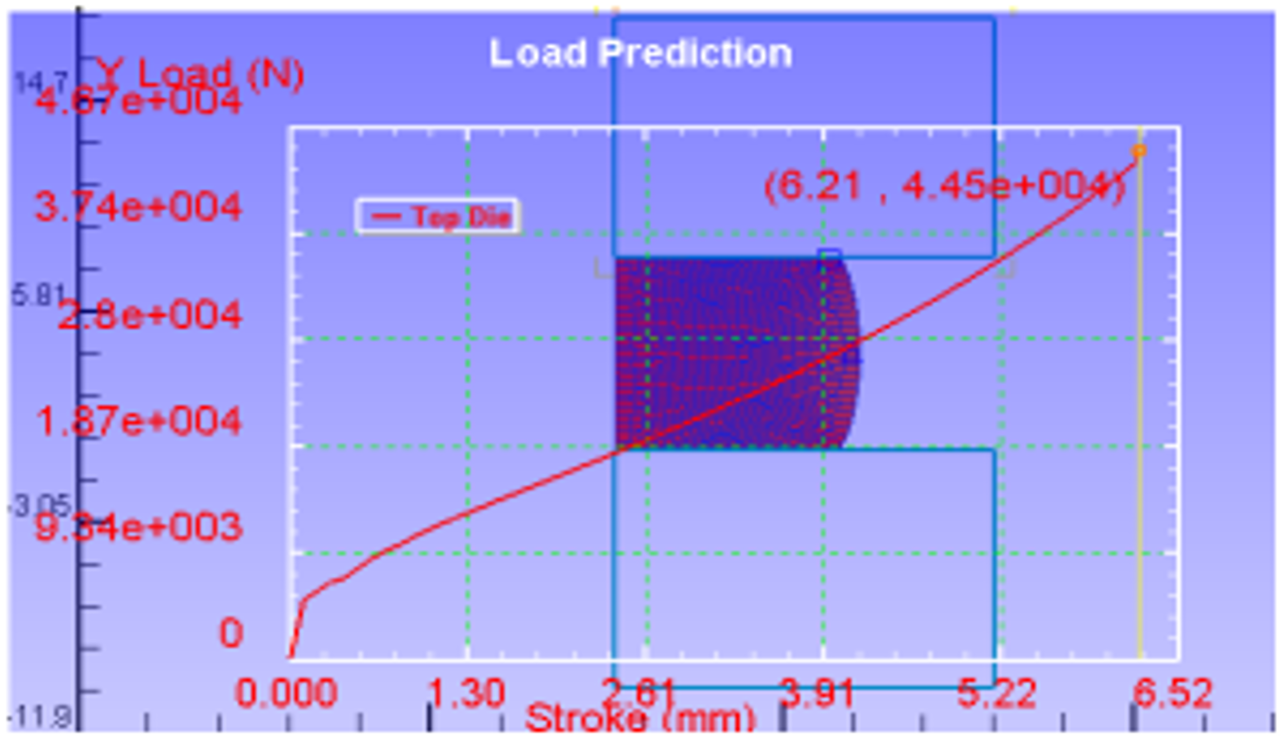
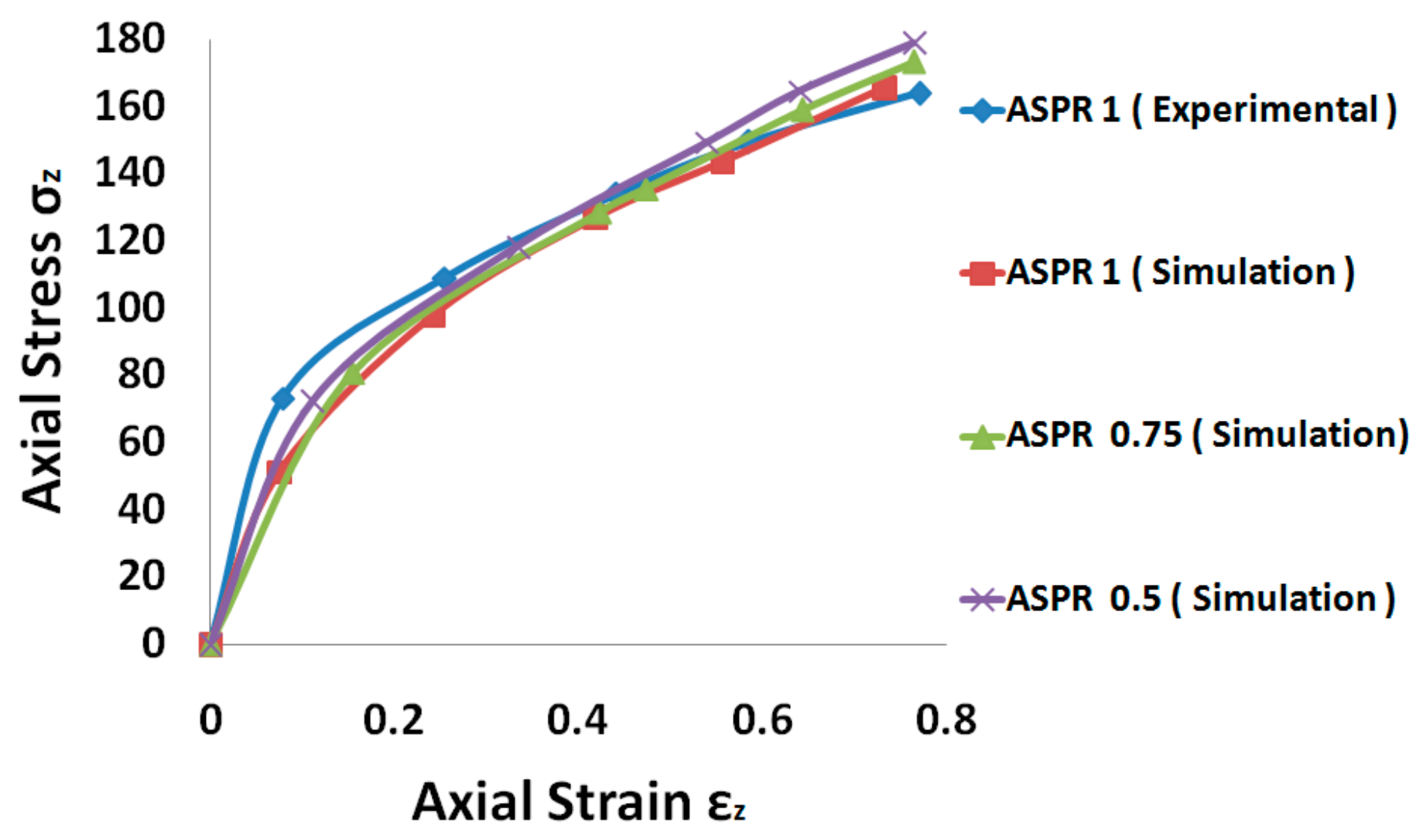


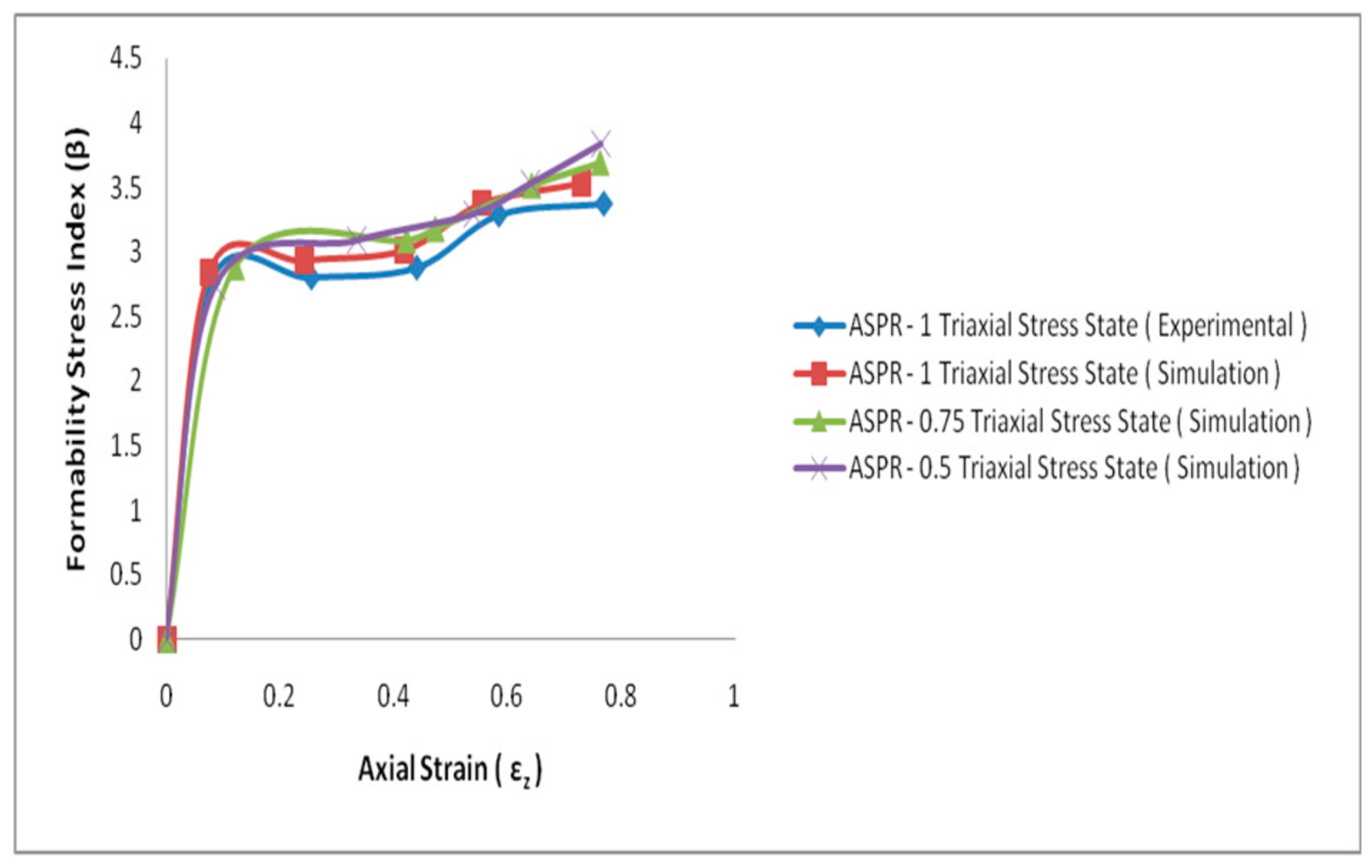
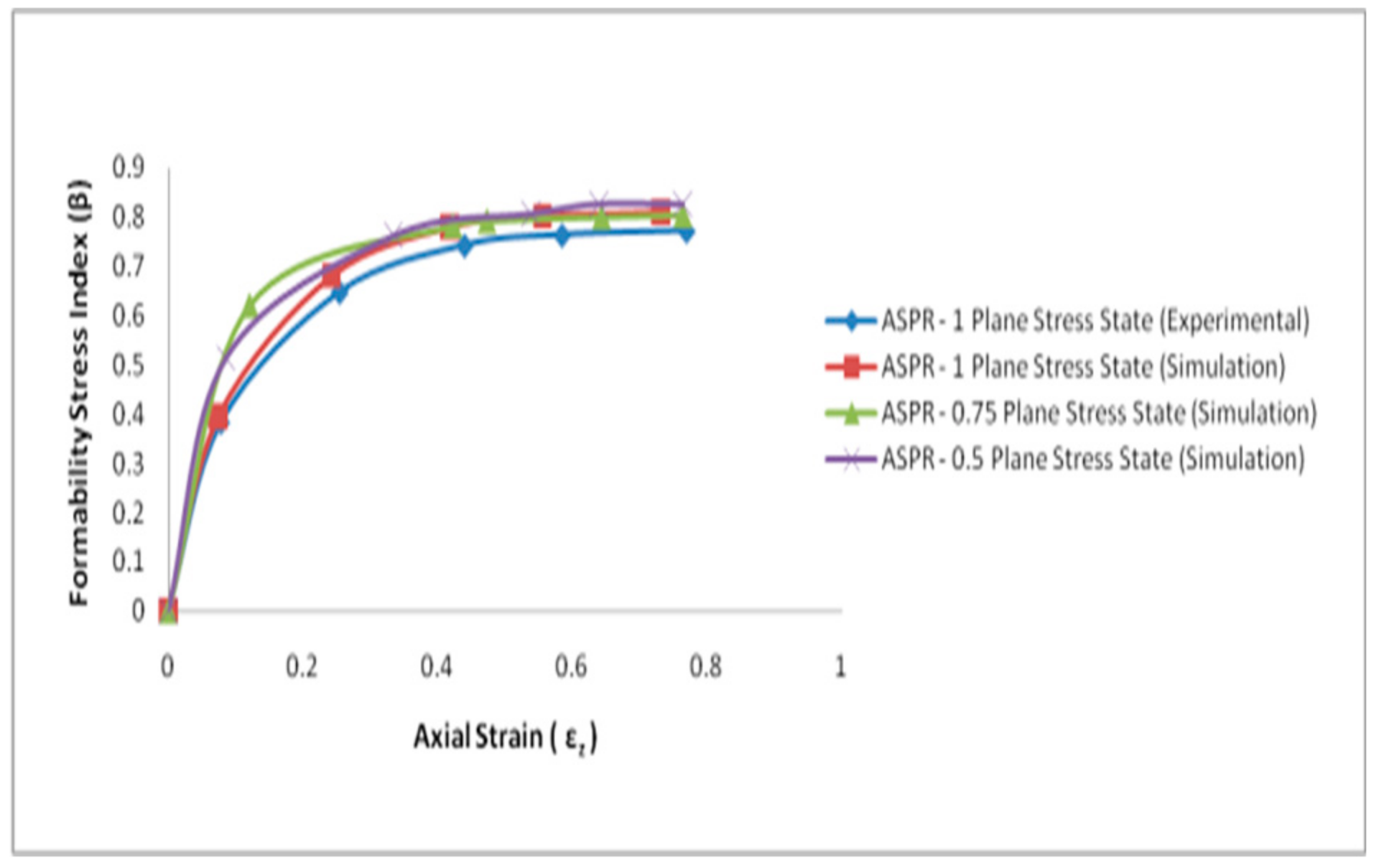
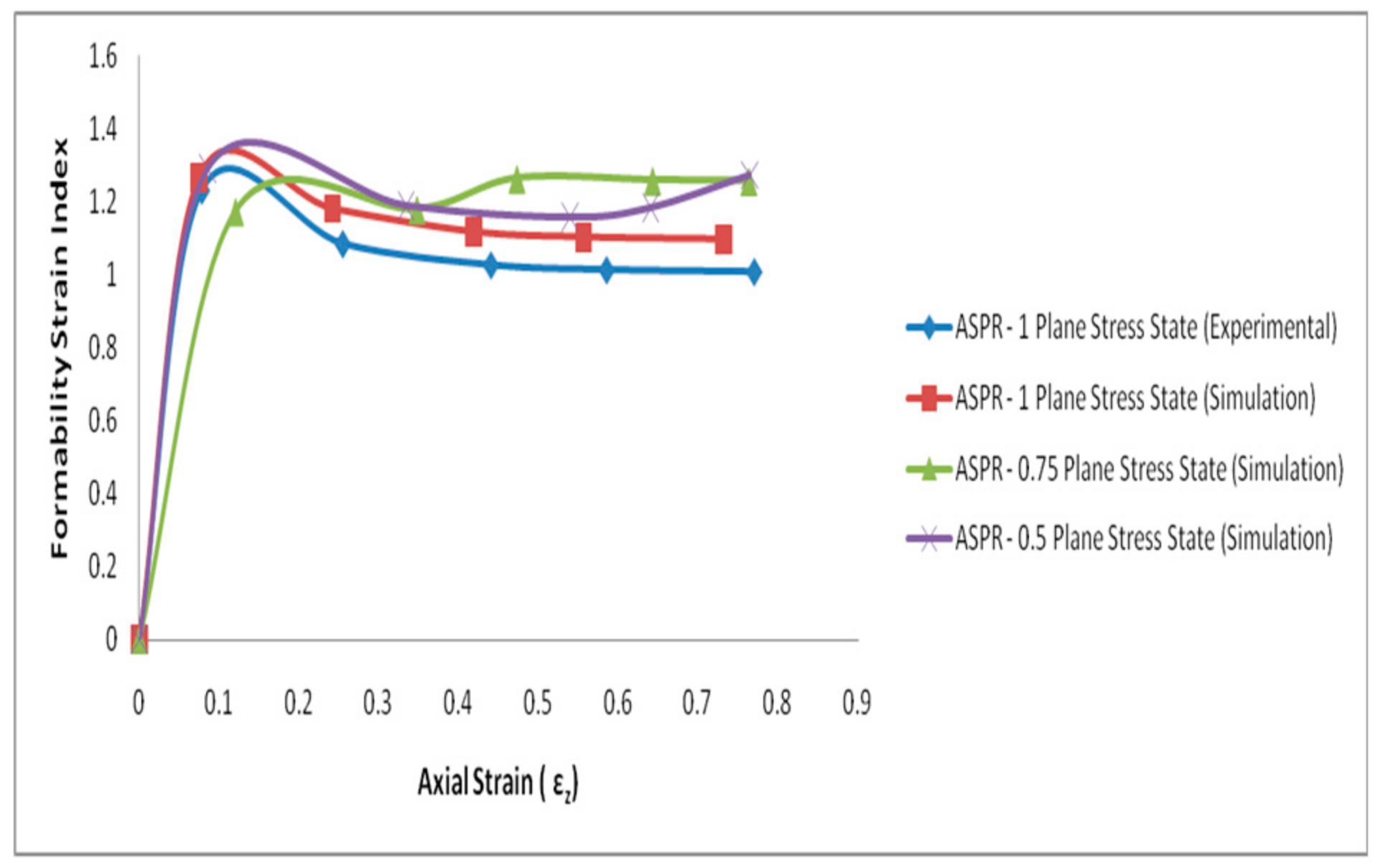

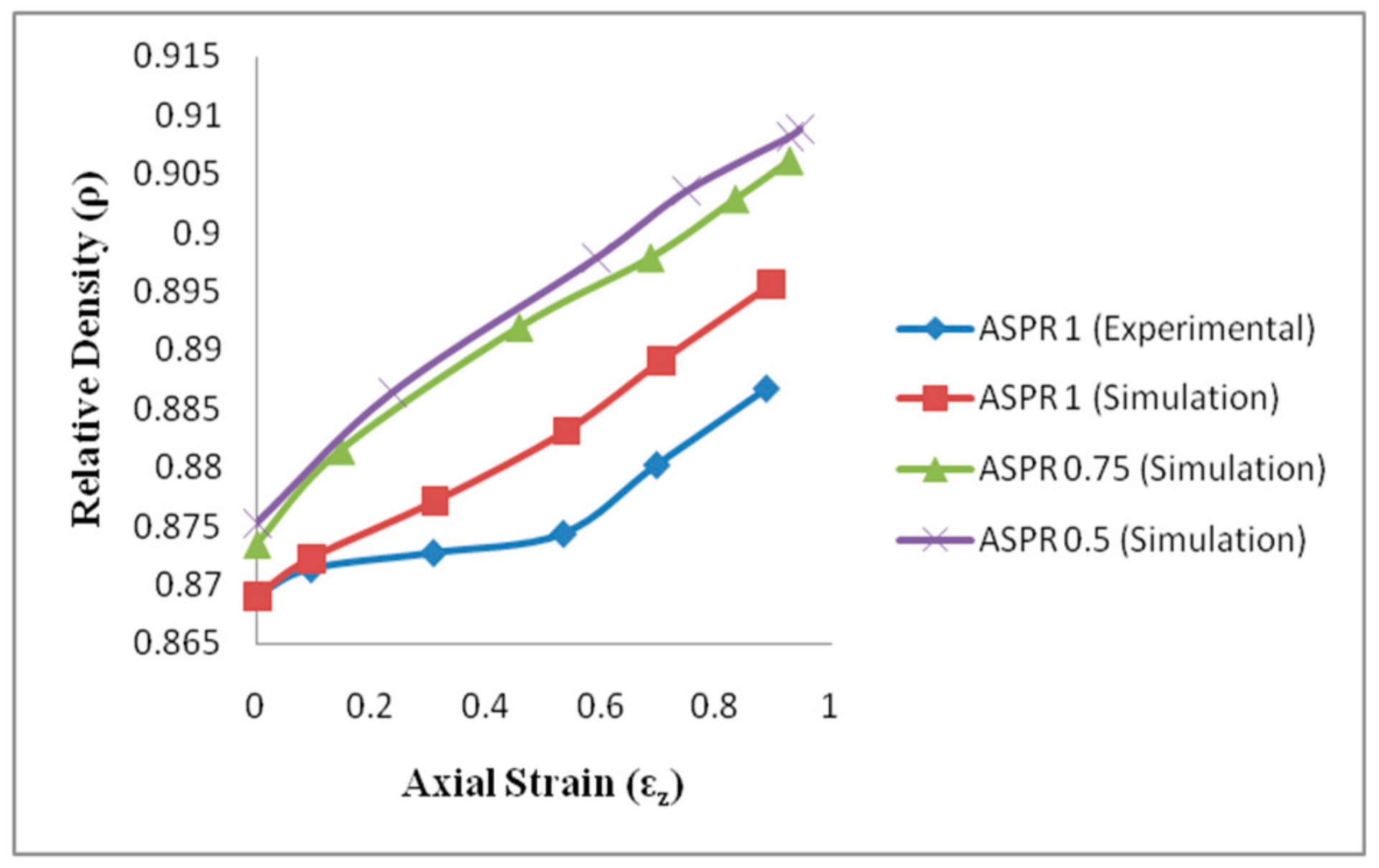

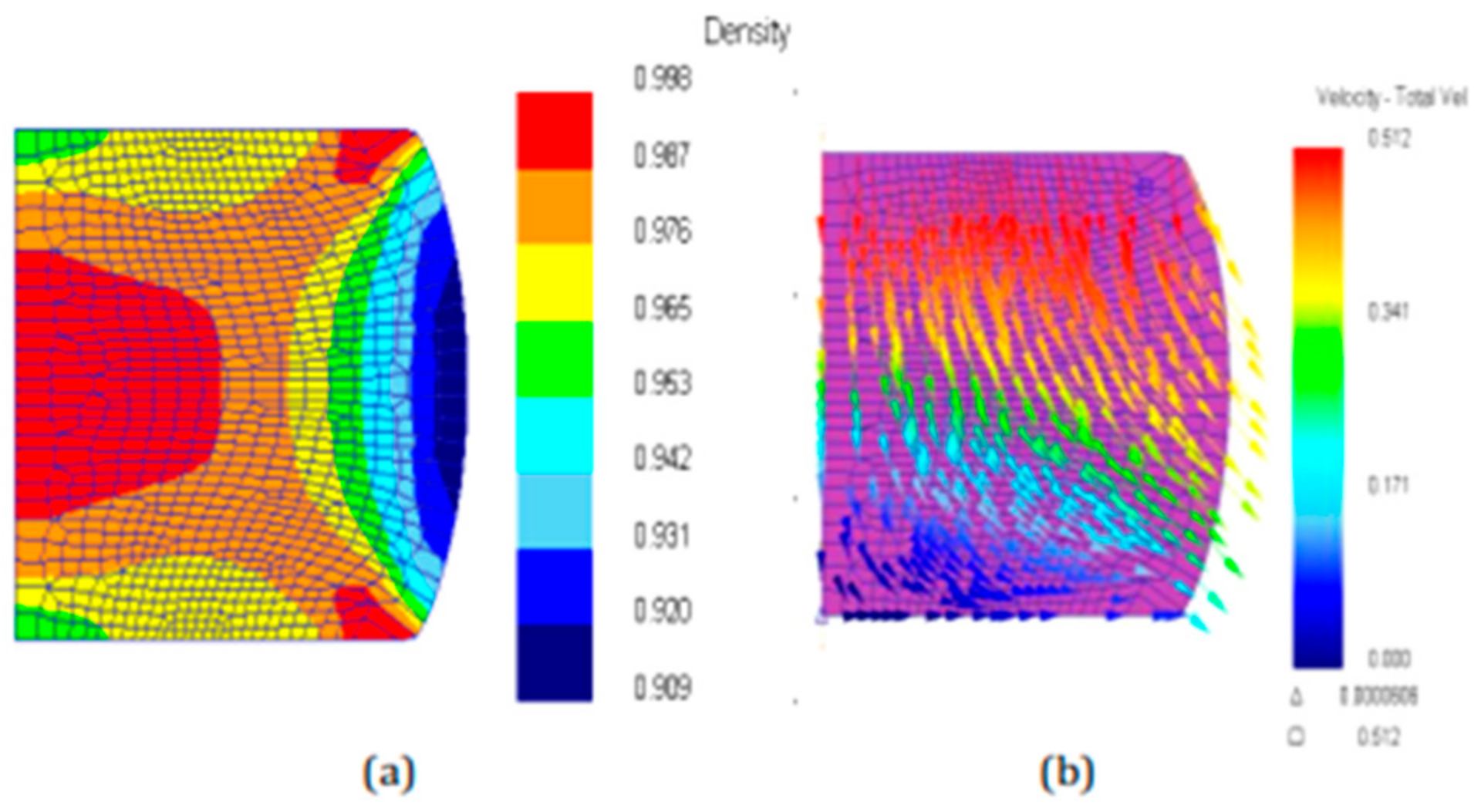
Disclaimer/Publisher’s Note: The statements, opinions and data contained in all publications are solely those of the individual author(s) and contributor(s) and not of MDPI and/or the editor(s). MDPI and/or the editor(s) disclaim responsibility for any injury to people or property resulting from any ideas, methods, instructions or products referred to in the content. |
© 2024 by the authors. Licensee MDPI, Basel, Switzerland. This article is an open access article distributed under the terms and conditions of the Creative Commons Attribution (CC BY) license (https://creativecommons.org/licenses/by/4.0/).
Share and Cite
Borra, N.V.S.; Davuluri, V.V.K.P.; Sastry, K.; Srikanu, U.; Harshad, M.; Prasad, A.R.K.; Teja, G.S.R. Studies Using Simulation to Examine the Behaviour of Sintered Aluminium Preforms during Densification. Eng. Proc. 2024, 66, 24. https://doi.org/10.3390/engproc2024066024
Borra NVS, Davuluri VVKP, Sastry K, Srikanu U, Harshad M, Prasad ARK, Teja GSR. Studies Using Simulation to Examine the Behaviour of Sintered Aluminium Preforms during Densification. Engineering Proceedings. 2024; 66(1):24. https://doi.org/10.3390/engproc2024066024
Chicago/Turabian StyleBorra, Naga Venkata Srinivas, Veera Venkata Krishna Prasad Davuluri, Ksbsvs Sastry, Undru Srikanu, Motupalli Harshad, Akula Rama Krishna Prasad, and Grandhi Sai Ram Teja. 2024. "Studies Using Simulation to Examine the Behaviour of Sintered Aluminium Preforms during Densification" Engineering Proceedings 66, no. 1: 24. https://doi.org/10.3390/engproc2024066024





